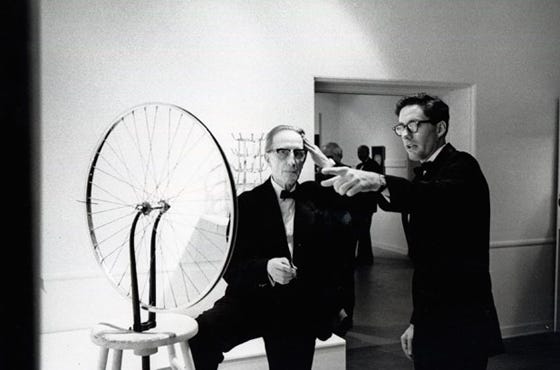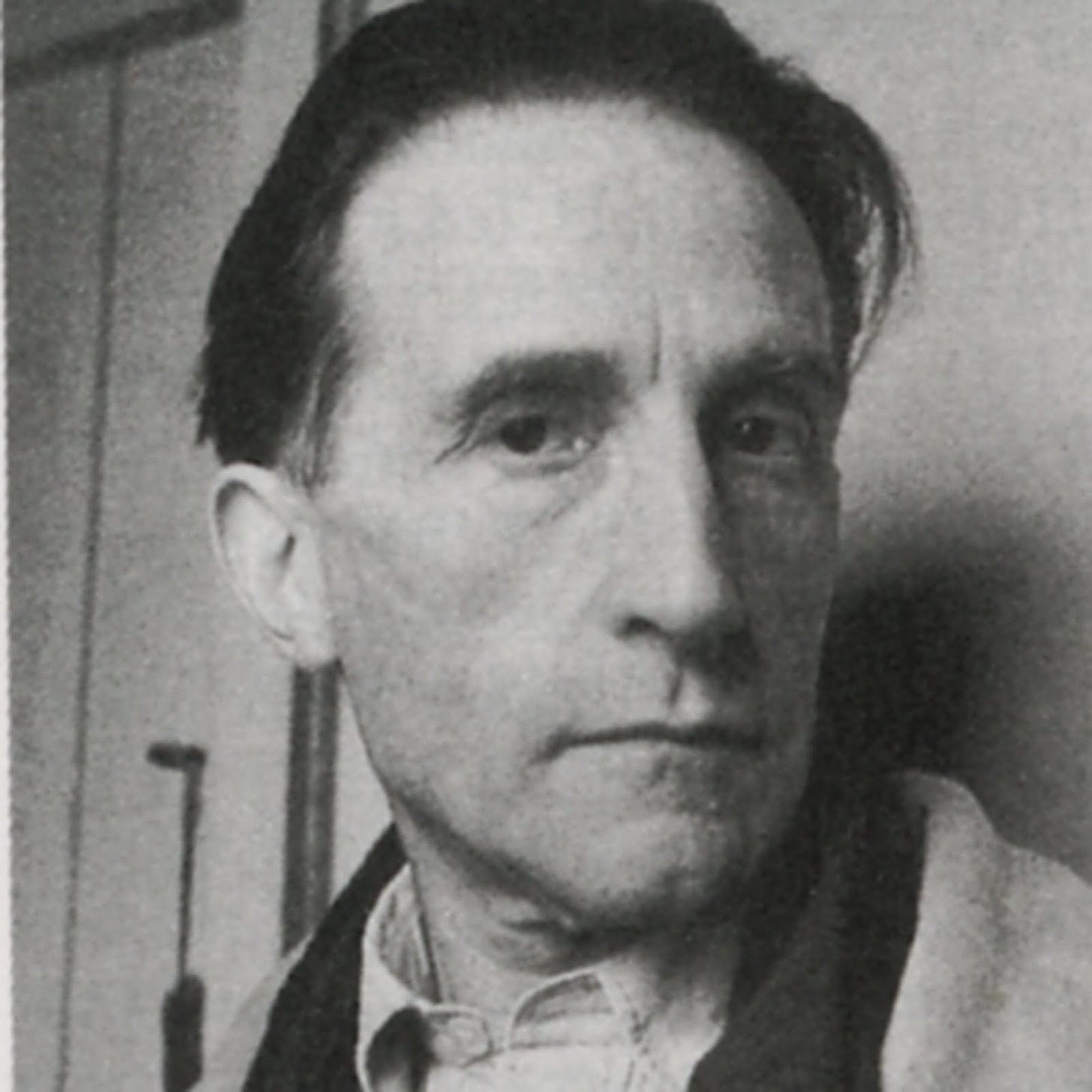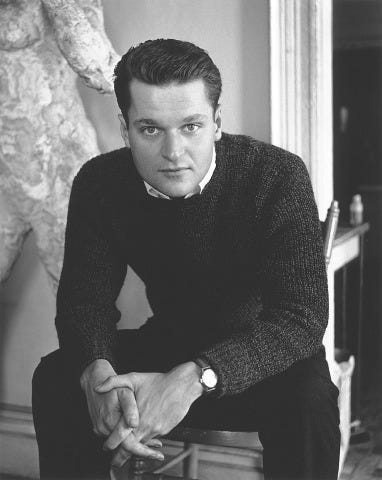As a little boy, maybe 8 or 9 years old, I went to the Pasadena Museum for an opening for a Frenchman by the name of Marcel Duchamp. Once I got there, I had an instant “like” for the exhibition, because one, I feel this is art that was totally kid friendly. For instance, a bicycle wheel on a stool. What child couldn’t relate to that! Also, I have a faint memory of a snow shovel that was placed on the wall, and I thought that was pretty neat as well. It was the first art exhibition I’ve been to, where I felt the mystery was being preserved, yet entirely inviting. Someone, I believe it was Walter Hopps introduced me to Duchamp. I remember him being tall, but of course, keep in mind that any kid thinks of a grown-up as being tall. What impressed me is when Walter announced my name, Duchamp slightly formally bent his waist and shook my little hand. I got the impression that he came to me, and approached me as not as an equal for God’s sake, but worthy enough to reach out for my hand.
The opening was a lot of fun, and it felt special. There was something in that room that just got the people there jazzed and excited. Every Los Angeles artist was at the opening, and it was sort of like if the King and Queen of somewhere came to town, and it was a private engagement for that royalty couple. In the small world that I lived in, it was evident that this Frenchman was someone important. Probably my favorite artist as a kid at that time was Salvador Dali. Due to mostly his appearance and his painting skills. It wasn’t until I became a teenager or late teen and realized that Dali was the Kiss (as in the band) of art. I outgrew that artist but never lost my appreciation of Marcel Duchamp. Speaking of (or writing)Dali, there was this amusing tale I read from John Cage when he was hanging out with Duchamp in the late 50s, and Duchamp requested that both of them should visit Dali, who was staying somewhere in New York City. Cage couldn’t imagine why Duchamp would want to visit Dali, to be honest, I think he felt that Dali was below him and Duchamp. Which is most likely the case, but Duchamp actually liked Dali. Not sure about loving his art, but he liked him as a character or person. Cage went with him, and Dali did most of the talking, and Duchamp basically sat there and just smiled at him. Cage didn’t really get it. I think a lot of people didn’t get Duchamp because they really didn’t understand his zen-like attention to accept almost anything.
When I began to write poetry, my primary influence was Tristan Tzara, because to me he was the craziest writing poet on the planet. But when I got older, I began to appreciate the poetry of John Ashbery. What impressed about his work, as a young poet, is the absence of ego in his poetry. It didn’t seem to be about him, but something else, but of course, it is really about the poet. I often pretend that I’m not an egoist, by practicing a look on my face that says “I’m listening to you with all my senses.” In actuality, I am not really listening, but thinking about my writing or a picture of a pretty girl a friend sent to me via e-mail. What I love about poetry is that there is a platform and one needs to work within its borders. With that restriction, I feel more alive and free. I imagine this is exactly what it is like to participate in S&M practices, where you either control someone or accept the fact that you are being controlled. I can understand that relationship fully. Ashbery strikes me as a poet who is very open to the world and takes it all in, but of course, he edits the images he comes upon, and therefore his poetry. One thing that stays in my mind is a quote from Ashbery (from an interview in The Paris Review) “I write with experiences in mind, but I don't write about them, I write out of them.” Also, I am very much in tuned to his ear and eyes. I don’t find Ashbery obscure, but in fact, he’s just more aware than others. Another quote by him that stays with me, and I feel it could have been from Duchamp as well: “It's rather hard to be a good artist and also be able to explain intelligently what your art is about. In fact, the worse your art is, the easier it is to talk about, at least I would like to think so.”






I have always been fascinated by the unlikely friendship between Duchamp and Dali but it was quite strong and lasted decades apparently. Duchamp and his squeeze/friend Mary Reynolds often rented a house in Cadaqués, not far from Dalí’s home. The antique Spanish door arched by bricks in Duchamp's last piece Étant donnés come from that town and Dali helped Duchamp with the painted background landscape he created for the piece. You seem apologetic about Dali's paintings but he truly was a wonderful painter. I used to see his works as a teen in Cleveland before the Dali Museum moved from Cleveland to Florida so that it would not be ruined by the air pollution! How wonderful that you got to attend that amazing show, Tosh.
What a great memory: being introduced to Marcel Duchamp by Walter Hopps at the opening of his retrospective at the Pasadena Art Museum. So cool! Eve Babitz has an interesting account of meeting Duchamp too. It’s been a while since I read it but as I recall she missed the opening but thanks to the efforts of a photographer friend ended up playing chess with Duchamp the next day for a photo op. She was completely nude and quite beautiful but Duchamp was a total gentleman, remained undistracted and eventually won the game. I love that quote from John Ashbery.